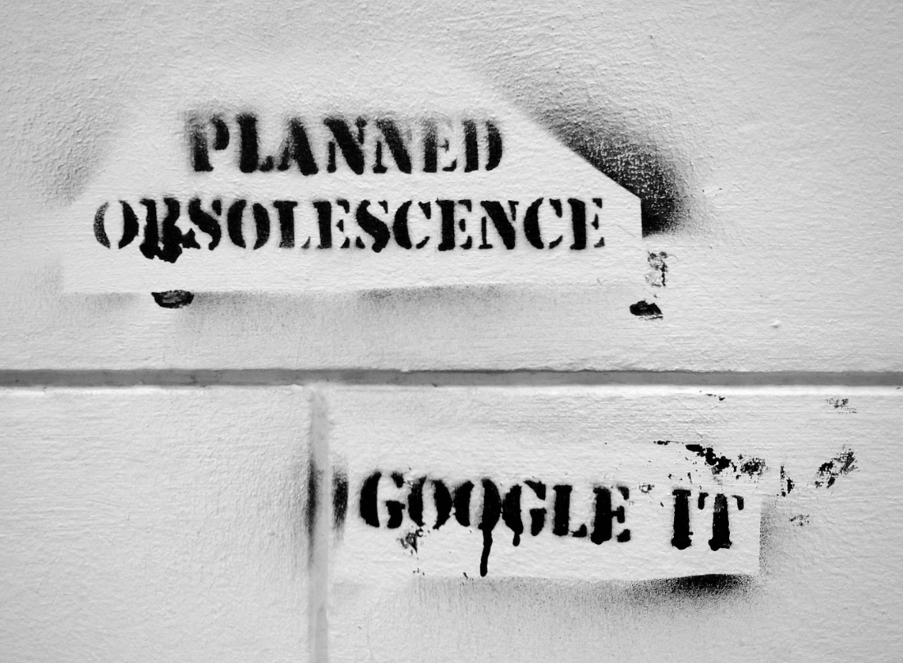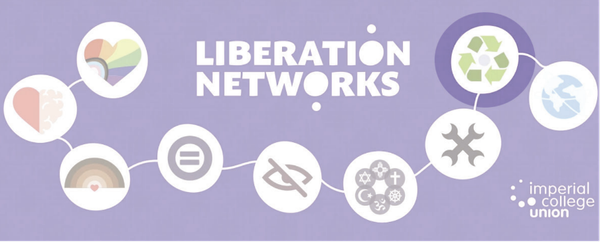Why companies make products that don't last
Why would you make something built to fall apart?

Planned obsolescence refers to the designing of products to last only for a short period of use. This makes no sense at the surface level: why would you make something built to fall apart? As with many seemingly irrational commercial decisions, this can be explained by money. Companies can turn huge profits from cheap, non-durable products that need to be replaced frequently. This is highly resource inefficient and creates unnecessary excess waste, much of which ends up in landfills long before it needs to.
A prime example of planned obsolescence is sheer nylon stockings. In the 1940s, the women’s garment industry realised the potential to make more money by selling more of these at cheaper prices. This led to a redesign of previously robust, good quality stockings to incorporate a ‘laddering’ issue, that creates holes and permanently disfigures them. Typically, the cheap, thin stockings produced by most major clothing manufacturers today only fulfil their purpose well for two or three wears before breaking, which means customers have to frequently purchase new sets of these stockings.
Apple’s iPhone is another product that has been designed to swiftly become obsolete. Anyone who has owned an iPhone will have noticed that every time the tech company builds up to the release of new models, their older phones start to work slower and run out of battery more quickly. These issues, termed Batterygate, have been theorised to be built into Apple’s software updates to incentivise customers to buy the latest phone.
Apple is also currently under investigation by French advocacy group Stop Planned Obsolescence (HOP) for their practice of pairing, in which components are linked to specific devices through their serial number. This means that devices can recognise unregistered components and potentially be less compatible with them, which disincentivises their customers from repairing their phones in favour of buying a new one. HOP claims that this goes against the EU’s ‘right-to-repair’ legislation, which requires manufacturers to make repair-and-maintenance information available to consumers and third-party repair services.
In many such cases, eventual obsolescence is so ingrained in product design that the consumer can do little to prevent it, and only recently brands started to revert back to the quality-over-quantity approach.
I recently had the pleasure of chatting with Laura Harnett, the founder of Seep, a brand looking to reinvent cleaning products to make them more durable, longer lasting, and less toxic to the environment than similar conventional products. Harnett noted a gap in the market for eco-friendly sponges, in which other products such as cleaning detergents have established alternatives like Ecover. Conventional sponges are made primarily of polyester and polyurethane, with an adhesive in between – these are worn down extremely quickly, and result in lots of microplastics released down our drains and into our waterways. Seep aims to combat this by using only recycled or natural materials; for example, their sponge is made from recycled cellulose wood pulp and loofah plant bres, with cotton thread to secure the spongey and scouring sides together. Seep is not the only company making their mark in this fashion, but unfortunately breaking into existing markets as an eco-friendly alternative more often than not means losing money or making a much lower profit margin at the outset.
Perceived obsolescence is multi-faceted, encompassing the view of products as only being useful or valuable when in good condition, as well as tying in the e ect of trends on consumption. At some point we have all experienced the targeted advertising that says you must have the latest shoes, make-up, television or celebrity collaboration from your favourite brand.
Trends are one of the greatest barriers to reducing consumption; we are heavily influenced by both our friends and role models to wear or use particular products, and owning items that are in fashion or from iconic brands has long been seen as a symbol of wealth and status. New isn’t always better either; your three-year-old pair of sneakers is likely to be much more comfortable than the trendy fresh pair you just bought and until they start to literally fall apart, they’re likely to be equally as functional as when they were brand new yet there is a satisfaction and self-esteem that comes with making that purchase.
One could even draw a link between perceived obsolescence and food waste, although this leads into a whole other discussion topic, and one that I won’t spend too many words on here. So many food items remain edible long after their stated expiration or use-by date, with the exception of products such as milk, but it is much easier to avoid food poisoning by sticking to the date than by making your own judgement.
To effectively move towards a world in which our consumption is reduced and all our waste can be reused or recycled, a wide behavioural change is needed on the part of consumers. But, more importantly, producers need to be driven to design products that can be recycled, and one approach to this is the policy of ‘extended producer responsibility’ (EPR), which extends the responsibility of producers to post-consumer products, so that they must manage their disposal at the end of their lifetime.
Another good practice is to encourage manufacturers to make goods in a modular way, so they can easily be replaced or mended when they fail; this is already done by Rolls Royce, who own all their engines, even those in use. This follows the EPR policy, while incorporating ease of maintenance and replacement for engines nearing the end of their life.
Furthermore, these concepts link to the potential for creating a ‘shared economy’, in which a wider variety of goods are treated as services that can be used by different people. An example of this is Circos, a children’s clothing company that offers baby clothes for rent, since most are only worn a few times before the child grows out of them.
As it is, the market incentives of capitalism and consumerism are nuanced, and not in favour of creating an environmentally sound economy. This might seem pessimistic, because the foremost drivers of change to economic structure, sadly, are not environmental lobbyists. However, what such a dire scenario indicates is that there are plenty of avenues for such groups to form, and to advocate for and put into place the incentive structures that produce positive impacts. This is not a case of saturation, but one of infinite opportunity for a meaningful transition towards a sustainable future.










